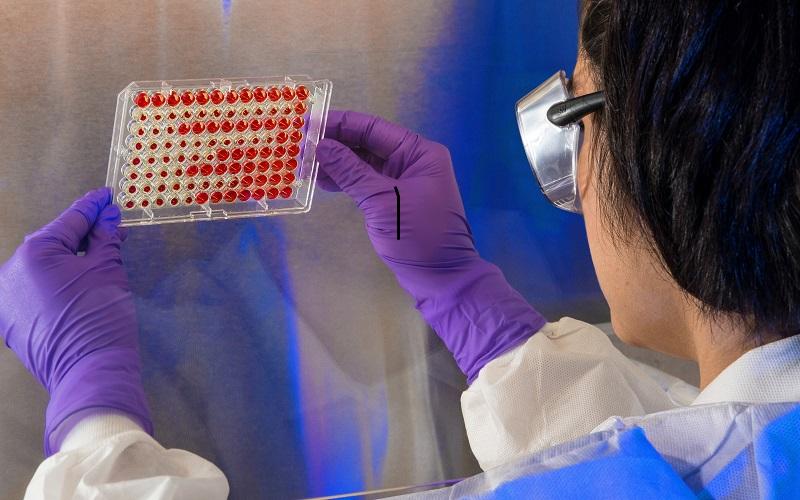What are Polysaccharides?
Polysaccharide molecules are sugar polymers formed from monosaccharides and have a high molecular weight. Polysaccharides vary in size and structure, ranging from simple linear to highly branched complex. Polysaccharides are classified as either homopolysaccharides, which contain only one type of sugar residue, such as starch, or heteropolysaccharides, which contain two or more different types of sugar residues, such as arabinoxylans and hyaluronic acid.
Classification of Polysaccharides
Polysaccharides play numerous important roles in the biology of living organisms, including structural support, energy storage, lubrication, and cell signal transduction. Plant polysaccharides (cellulose), microbial polysaccharides (dextran), animal polysaccharides (chitosan, nature origin obtained from the chitin of exoskeletons crustaceans and insects), and semisynthetic polysaccharides are the four types of polysaccharides.
Extraction of polysaccharides
Ionic or hydrogen bonds hold polysaccharides to the interstitial material or cell wall, respectively. Depending on the location of the polysaccharide, different extraction techniques are used. Common solvents include hot water, acid, alkali, ethanol, and others. Microwave or ultrasonic waves can help with rough extraction. Supercritical fluid extraction technology and sophisticated enzyme-assisted extraction technology are two frequently used techniques.
Using these methods, complex enzymes can specifically degrade the cell wall and the barrier of intracellular macromolecule dissolution under milder conditions, thereby accelerating the release of polysaccharides. At the same time, the reaction can be controlled by changing the system conditions according to the characteristics of the enzyme.
Removal of impurities from polysaccharides
Impurities like inorganic salts, lipids, proteins, and low-molecular non-polar substances are frequently present in crude polysaccharide extracts. Dialysis can be used to remove impurities with low molecular weight. Protease, Sevag, TCA, and trifluorotrichloroethane are methods for removing proteins. Organic solvents like ethanol, diethyl ether, and petroleum ether can be used to remove fats. Adsorption and oxidation are frequently used techniques for removing pigment impurities.
Separation and purification of polysaccharides
A mixed polysaccharide solution can be produced after separation and impurity removal, and the process of separating the mixed polysaccharide solution into a variety of single polysaccharides is known as polysaccharide purification. Sedimentation, chromatography, zone electrophoresis, ultracentrifugation, and other biochemical analytical techniques are some of the more widely used purification techniques. In order to achieve the best purification outcomes, polysaccharide purification typically requires the combination of two or more methods.
Polysaccharide Analysis Aspects
Determination of sugar content
A frequently used method for determining the sugar content of a sample is the developer-sulfuric acid method. Monosaccharides, polysaccharides and their derivatives are hydrolyzed into monosaccharides under the action of sulfuric acid, and quickly dehydrated to form aldehyde derivatives, and then condensed with phenols and aromatic amines to form colored compounds. The content of polysaccharides was determined indirectly by colorimetric quantification. These methods are simple, fast, sensitive, and have good color stability for colored compounds.
Molecular weight determination
Since there is no absolute method for determining the molecular weight of polysaccharides, it is usually determined using the statistical average method. In the past, osmotic pressure method, end group method, viscosity method and light scattering method were generally used, but the operation was complicated and errors were prone to occur. The most commonly used methods are gel filtration and high-performance liquid chromatography. Both methods must use standard polysaccharides of known molecular weight as controls. For polysaccharides with a molecular weight less than 50,000, mass spectrometry can be used.
Composition Analysis
Polysaccharide composition analysis methods can generally be divided into: traditional chemical analysis, physical analysis (instrumental analysis) and biological analysis. Among them, chemical analysis includes partial or full acid hydrolysis, neutralization and filtration. Finally, analysis is performed using paper chromatography (PC), thin layer chromatography (TLC), gas chromatography (GC), liquid chromatography (HPLC), or ion chromatography. Widely used instrumental analysis methods include spectrophotometry, infrared spectroscopy, nuclear magnetic resonance, gas chromatography, and mass spectrometry.
Structure Identification
Polysaccharides have a more complex macromolecular structure than proteins. Common structural analysis methods include periodate oxidation, Smith degradation and methylation reactions. The use of many advanced instruments in recent years has also greatly improved analytical methods.
Collected by CD BioGlyco, a biotechnology company specialized in glycobiology research. The company provides a wide range of Polysaccharides-related services, including: Polysaccharides-based Glycomedicine Development, Novel Plant Polysaccharides-based Adjuvant Development, Structural Analysis of Plant Polysaccharides, Separation of Plant Polysaccharides, Quantitative Analysis of Polysaccharides, and others.



